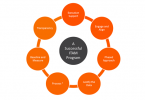This is a long article, but I hope it is an important one. I think the IT Asset Management sector has an image problem, and it’s one that we ought to address.
I want to start with a quick story:
Representing BMC software, I recently spoke at the Annual Conference and Exhibition of the International Association of IT Asset Managers (IAITAM). I was curious about how well attended my presentation would be. It was up against seven other simultaneous tracks, and the presentation wasn’t about the latest new-fangled technology or hot industry trend. In fact, I was concerned that it might seem a bit dry, even though I felt pretty passionate that it was a message worth presenting.
It turned out that my worries were completely unfounded. “Benchmarking ITAM; Understand and grow your organization’s Asset Management maturity” filled the room on day 1, and earned a repeat show on day 2. That was nice after such a long flight. It proved to be as important to the audience as I hoped it would be.
I was even more confident that I’d picked the right topic when I’d finished my introduction and my obligatory joke about the weather (I’m British, it was hot, it’s the rules), I asked the first few questions of my audience:
“How many of you are involved in hands-on IT Asset Management?”
Of the fifty or so people present, about 48 hands went up.
“And how many of you feel that if your companies invested more in your function, you could really repay that strongly?”
There were still at least 46 hands in the air.
IT Asset Management is in an interesting position right now. Gartner’s 2012 Hype Cycle for IT Operations Management placed it at the bottom of the “Trough of Disillusionment”… that deep low point where the hype and expectations have faded. Looking on the bright side, the only way is up from here.
It’s all a bit strange, because there is a massive role for ITAM right now. Software auditors keep on auditing. Departments keep buying on their own credit cards. Even as we move to a more virtualized, cloud-driven world, there are still flashing boxes to maintain and patch, as well as a host of virtual IT assets which still cost us money to support and license. We need to address BYOD and mobile device management. Cloud doesn’t remove the role of ITAM, it intensifies it.
There are probably many reasons for this image problem, but I want to present an idea that I hope will help us to fix it.
One of the massive drivers of the ITSM market as a whole has been the development of a recognized framework of processes, objectives, and – to an extent – standards. The IT Infrastructure Library, or ITIL, a huge success story for the UK’s Office of Government Commerce since its creation in the 1980s.
ITIL gave ITSM a means to define and shape itself, perfectly judging the tipping point between not-enough-substance and too-much-detail.
Many people, however, contend that ITIL never quite got Asset Management. As a discipline, ITAM evolved in different markets at different times, often driven by local policies such as taxation on IT equipment. Some vendors such as France’s Staff&Line go right back to the 1980s. ITIL’s focus on the
Configuration Management Database (CMDB) worked for some organizations, but was irrelevant to many people focused solely on the business of managing IT assets in their own right. ITIL v3’s Service Asset Management is arguably something of an end-around.
However, ITIL came with a whole set of tools, practices and service providers that helped organizations to understand where they currently sat on an ITSM maturity curve, and where they could be. ITIL has an ecosystem – and it’s a really big one.
Time for another story…
In my first role as an IT professional, back in 1997, I worked for a company whose IT department boldly drove a multi-year transformation around ITIL.
Each year auditors spoke with ITIL process owners, prodded and poked around the toolsets (this was my part of the story), and rated our progress in each of the ITIL disciplines.
Each year we could demonstrate our progress in Change Management, or Capacity Management, or Configuration Management, or any of the other ITIL disciplines. It told us where we were succeeding and where we needed to pick up. And because this was based on a commonly understood framework, we could also benchmark against other companies and organizations. As the transformation progressed, we started setting highest benchmark scores in the business. That felt good, and it showed our company what they were getting for their investment.
But at the same time, there was a successful little team, also working with our custom Remedy apps, who were automating the process of asset request, approval and fulfillment. Sadly, they didn’t really figure in the ITIL assessments, because, well, there was no “Asset Management” discipline defined in ITIL version 2. We all knew how good they were, but the wider audience didn’t hear about them.
Even today, we don’t have a benchmarking structure for IT Asset Management that is widely shared across the industry. There are examples of proprietary frameworks like Microsoft’s SAM Optimization Model, but it seems to me that there is no specific open, widely accepted “ITIL for ITAM”.
This is a real shame, because Benchmarking could be a really strong tool for the IT Asset Manager to win backing from their business. There are many reasons why:
- Benchmarking helps us to understand where we are today.
- More importantly, it helps us to show where we could get, how difficult and expensive that might be, and what we’re missing by not being there.
Those two points alone start to show us what a good tool it is for building a case for investment. Furthermore:
- Asset Management is a very broad topic. If we benchmark each aspect of it in our organizations, we can get a better idea of where our key strengths and weaknesses are, and where we should focus our efforts.
- Importantly, we can also show what we have achieved. If Asset Management has an image problem, then we need a way to show off our successes.
And then, provided we work to a common framework…
- Benchmarking gives us an effective way of comparing with our peers, and with the best (and worst!) in the industry.
At the IAITAM conference, and every time I’ve raised this topic with customers since, there has been a really positive response. There seems to be a real hunger for a straightforward and consistent way of ranking ITAM maturity, and using it to reinforce our business cases.
For our presentation at IAITAM, we wanted to have a starting point, so we built one, using some simple benchmarking principles.
First, we came up with a simple scoring system. “1 to 4” or “1 to 5”, it doesn’t really matter, but we went for the former. Next, we identified what an organization might look like, at a broad ITAM level, at each score. That’s pretty straightforward too:
Asset Maturity – General Scoring Guidelines
- Level 1: Little or no effective management, process or automation.
- Level 2: Evidence of established processes, automation and management. Partial coverage and value realization. Some automation.
- Level 3: Fully established and comprehensive processes. Centralized data repository. Significant
automation. - Level 4: Best-in class processes, tools and results. Integral part of wider business decision support and strategy. Extensive automation.
In other words, Level 4 would be off-the-chart, industry leading good. Level 1 would be head-in-the-sand barely started. Next, we need to tackle that breadth. Asset, as we’ve said, is a broad subject. Software and hardware, datacenter and desktop, etc…
We did this by specifying two broad areas of measurement scope:
- Structural: How we do things. Tools, processes, people, coverage.
- Value: What we achieve with those things. Financial effectiveness, compliance, environmental.
Each of these areas can now be divided into sub-categories. For example, on “Coverage” we can now describe in a bit more detail how we’d expect an organization at each level to look:“Asset Coverage” Scoring Levels
- Level 1: None, or negligible amount, of the organization’s IT Assets under management
- Level 2: Key parts of the IT Asset estate under management, but some significant gaps remaining
- Level 3: Majority of the IT Asset estate is under management, with few gaps
- Level 4: Entire IT Asset estate under full management by the ITAM function.
This process repeats for each measurement area. Once each is defined, the method of application is up to the user (for example, separate assessments might be appropriate for datacenter assets and laptops/desktops, perhaps with different ranking/weighting for each).
You can see our initial, work-in-progress take on this here: https://communities.bmc.com/communities/people/JonHall/blog/2012/10/17/asset-management-benchmarking-worksheet. We feel that this resource is strongest as a community resource. If it helps IT Asset managers to build a strong case for investment, then it helps the ITAM sector.
Does this look like something that would be useful to you as an IT Asset Manager, and if so, would you like to be part of the community that builds it out?







